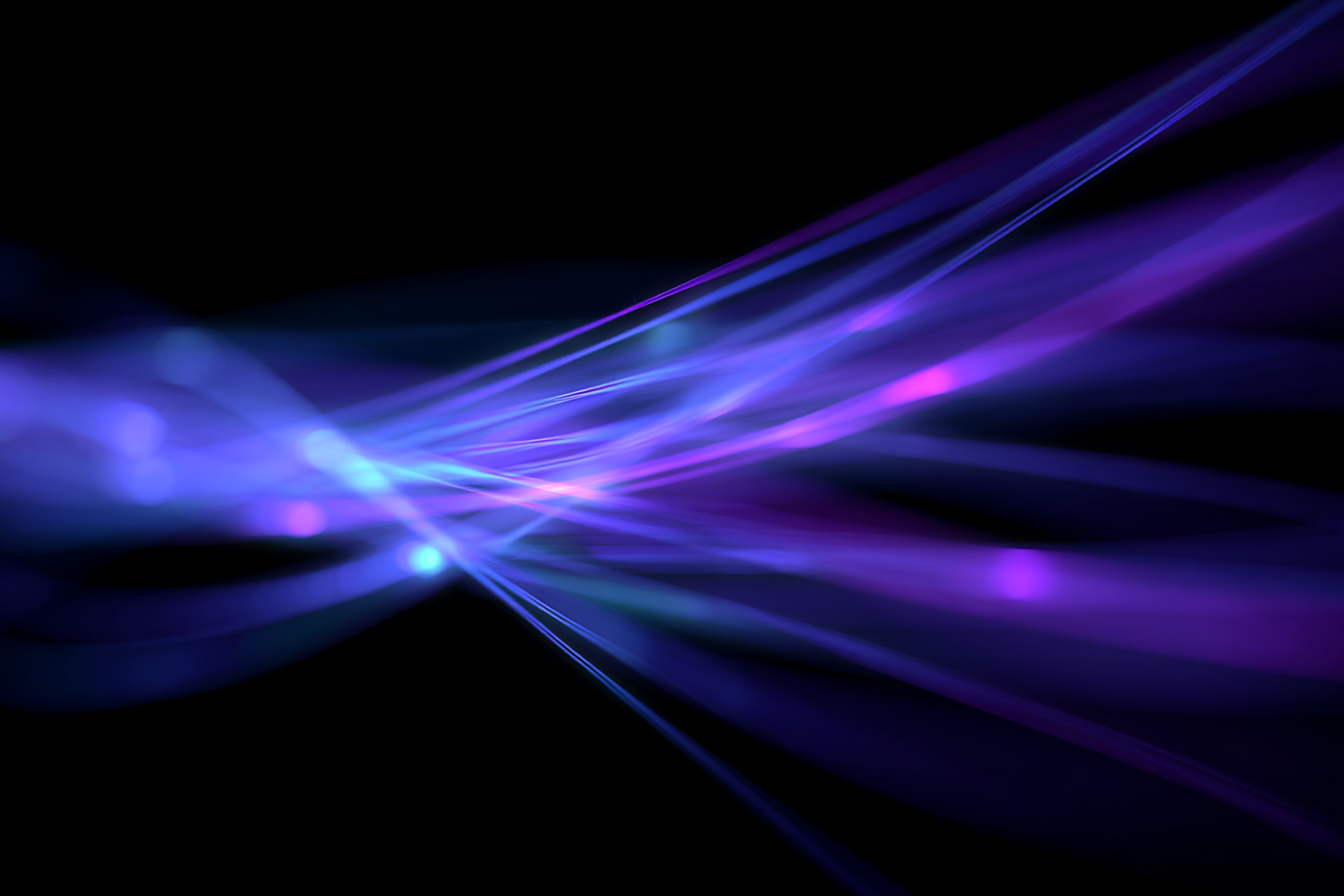History and significance of laser technology
More than 40 years have passed since the development of the first laser system, but this was enough to make quantum electronics one of the leading areas of science and technology. Numerous improvements of lasers and their application make it possible to obtain fundamentally new results in information systems and communications, in biology and medicine, in space, and in other scientific research.
Unique properties of laser beam emission
Laser beam emission is characterized by monochromaticity, sharp focus, due to which it is possible to concentrate laser beam energy and power at considerable distances, the ability to vary the modes of radiation from continuous to pulsed with different pulse durations, and finally, coherence and polarization. A unique combination of these properties allows realizing various interaction mechanisms – both thermal (plasma formation, ablation, evaporation, melting, heating), and non-thermal (spectral resonance) effects on matter, which affect complex atomic and molecular systems.
Early adoption in medicine
It is not unexpected that the concept of employing laser beam radiation in medicine seems to be one of the initial. Over the past years, fiber laser devices and techniques have been used in almost all sections of medicine. Fiber lasers are especially successful in surgery, therapy, and the diagnosis of diseases. At the same time, it was discovered that each type of laser system operation, each laser-medical technique requires a specific combination of basic parameters of laser beam radiation and knowledge of the mechanisms of its interaction with various tissues.
Main areas of fiber laser application
Today, there are three main areas of fiber laser application in medicine.
Non-invasive diagnostics
New methods of non-invasive diagnostics: optical coherence tomography is considered to be a promising method for the diagnosis of ophthalmic and cancer diseases, and laser spectral analysis of biomarker molecules in exhaled air for diseases of the gastrointestinal tract.
It is these diagnostics that use such unique properties of laser beam radiation as high coherence and polarization, which distinguish it from ordinary, even monochromatic, light.
Therapy using fiber laser systems
The therapy by fiber laser systems is widely used: irradiation with low-intensity laser systems of poorly healing wounds or human blood; in combination with photosensitizers, low-energy fiber lasers are used to selectively destroy cancer cells, atherosclerotic plaques, and treat macular degeneration (photodynamic therapy).
Surgical applications
Powerful (high-energy) laser systems are used as a surgical tool in ophthalmology, otorhinolaryngology, urology, and cosmetology. The surgery uses high-intensity laser systems that cause irreversible changes in tissues: welding, evaporation, and ablation (removal and cutting).
External and intravenous laser therapy
The therapy by fiber laser systems is another area that has become most widespread in the whole world – irradiation with low-energy lasers of blood and poorly healing wounds.
Mechanism of external laser therapy
For external use, laser system treatment occurs by exposure to certain areas and points of the body. The light penetrates through the tissues to a greater depth and stimulates the metabolism in the affected tissues, activates the healing and regeneration of wounds, and there is a general stimulation of the body as a whole.
Mechanism of intravenous laser therapy
During intravenous fiber laser system therapy, the laser beam influences the blood through a thin light guide that is inserted into a vein. The intravascular effect of low-intensity radiation allows you to affect the entire mass of blood. This leads to stimulation of hematopoiesis, strengthening immunity, increasing the transport function of blood, and also helps to increase metabolism. Significantly positive effects in laser system therapy of angina pectoris, myocardial infarction, and other pathologies were obtained with the introduction of an optical fiber through which laser beam radiation was introduced into the patient’s elbow vein.
Coherence and polarization considerations
Fiber laser radiation differs from ordinary, even monochromatic light by its coherence and polarization. There is a misconception that these special properties are responsible for the observed clinical and photobiological effects. As the laser beam penetrates deeper into the biological tissue (skin, organ, blood), coherence and polarization persist only to a depth of 200-300 microns, and then these properties disappear, and incoherent and non-polarized, monochromatic radiation spreads. Consequently, the beneficial effects observed during laser system therapy of various diseases are caused not by some special properties of fiber laser exposure, but are similar to the action of ordinary unpolarized and incoherent light with an appropriate radiation wavelength.
Secondary radiation and deeper effects
Photons emitted by electrons of excited biomolecules form secondary radiation that propagates (scatters) in all directions and excites other biological tissue molecules, increasing the depth of effective exposure. Due to the diversity of biomolecules in the body, secondary radiation is broadband, incoherent, and non-polarized.
Role of blood and lymph transport
Another factor that increases the depth of effective exposure is the transfer of excited molecules by blood and lymph throughout the body. It can be assumed that at depths exceeding 3 cm, the main biological effect is exerted not by the primary, laser beam radiation, but rather by the secondary scattered broadband incoherent and non-polarized radiation.
Challenges in dose determination
It is also very difficult to determine in practice the dose of absorbed laser beam radiation, since the proportion of reflected and absorbed radiation depends on many factors, so some researchers believe that fiber laser system therapy is an art like all medicine.
Mid-IR fiber laser applications
Today, two applications of fiber laser selective excitation of material vibrational levels in the mid-IR region of the spectrum are distinguished: fiber laser surgery of soft and hard tissues and laser system evaporation of polymers for thin-film spraying. These fiber laser system applications are based on the ability of mid-IR lasers to cause thermal or thermomechanical changes in the materials being processed, which can be classified as phase changes rather than laser beam chemistry. Fiber lasers have great potential for creating precision surgical instruments, due to their ability to focus laser beam radiation into a small spot along the length. A larger penetration depth increases the number of damaged cells, while a shorter depth results in less material removal per pulse.
Surgical precision and ablation
The goal of laser beam ablation is to remove a specific part of the tissue, leaving the surrounding tissue biologically alive. Surgical requirements, however, are often the opposite: high ablation rates are required in dentistry, while they should be minimal in refractive ophthalmology; cutting vascular tissues (brain surgery) requires some amount of surface coagulation (“thermal damage”) to achieve hemostasis (stop bleeding), while for non-vascular tissue (cosmetology) wound healing is better when there is no thermal damage.
Photodynamic therapy (PDT) with fiber lasers
Laser systems are finding new applications in PDT, a new cancer treatment method. Unsuccessful attempts to control the development of cancer remain a major problem. The main goal for patients with an incurable disease is to delay the development of the tumor. If the tumor is not large, the fiber laser system thermal ablation may become the treatment.
Mechanism and applications of PDT
Photodynamic therapy (PDT) by laser systems is another minimally invasive strategy for the removal of tumors. The idea behind PDT is to use the toxicity of porphyrin to destroy tumors. Up to the present moment, it has mainly been used to treat superficial, malignant, or pre-malignant lesions of the mucous membrane, carcinoma of the bladder, tumors of the esophagus or bronchus, a tumor on the head or neck, accessible through the endoscope. In combination with special catheters and the development of new photosensitizers, PDT by fiber laser systems can be effective for patients with solid tumors and especially with liver metastases.










